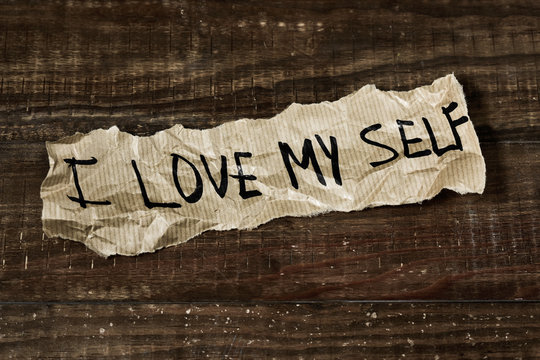We’ve all been there. Something doesn’t go our way, and suddenly we find ourselves spiraling into a pit of self-pity. It’s easy to get stuck in this cycle, constantly dwelling on our failures and shortcomings. But what if there was a way to break free from this pattern? In this blog post, we’ll explore powerful tools for moving on from self-pity and embracing a more positive outlook on life. Get ready to leave those negative emotions behind and take control of your mindset once and for all.

Understanding Self-Pity: A Deeper Look into its Roots
Self-pity is a powerful emotion that can trap you in negative thought patterns and prevent you from moving forward. It often stems from feelings of powerlessness or victimhood and is reinforced by repeated negative self-talk.
For some, self-pity may be a learned behavior, picked up from role models or societal messaging that emphasizes helplessness in the face of adversity. For others, it may be rooted in experiences of trauma or abuse that have left them feeling vulnerable and unsupported.
Regardless of its origin, self-pity can become a vicious cycle if not addressed proactively. Dwelling on negative thoughts and emotions only strengthens their hold over us while draining our energy for positive action.
But with practice and the right tools, it’s possible to break free from this pattern of thinking and cultivate resilience instead. The first step is to understand the root causes behind your tendency towards self-pity so you can begin working through them constructively.

Breaking the Cycle of Self-Pity: Step-by-Step Guide to Overcoming It
Self-pity can be a vicious cycle that is hard to break. However, it is possible to overcome it with the right tools and mindset. The first step is to recognize when you are wallowing in self-pity and acknowledge that it is not a healthy or productive state of mind.
Next, challenge your negative thoughts and beliefs by asking yourself if they are really true or if there is another perspective to consider. This can help you shift your focus from what you don’t have or can’t do, to what you do have and can do.
Another important step is to take action towards your goals, no matter how small they may seem. This can help build momentum and give you a sense of accomplishment, which can boost your self-esteem.
It’s also important to practice self-care and surround yourself with positive influences. This includes taking care of your physical health, engaging in activities that bring you joy, and spending time with supportive friends and family.
Remember, breaking the cycle of self-pity takes time and effort, but it is possible with persistence and a willingness to change your mindset.

How to Deal with Someone Who Wallow in Self-Pity Without Losing Your Sanity
Dealing with someone who constantly wallows in self-pity can be emotionally draining and frustrating. However, it’s important to approach the situation with empathy and understanding. Active listening is key in this situation. Allow the person to express their feelings without interrupting or dismissing them. Validate their emotions by acknowledging that what they’re going through is difficult.
It’s also important to set boundaries. Enabling their self-pity by constantly giving in to their demands or complaints will only reinforce the behavior. Instead, gently encourage them to take action towards finding a solution or seeking help.
Remember that you can’t force someone to change their mindset, but you can offer support and guidance. Encourage them to seek professional help if necessary and offer to accompany them if they’re hesitant. Ultimately, it’s up to the individual to break the cycle of self-pity, but your support can make a significant difference in their journey towards healing.

Tools for Moving On from Self-Pity and Embracing a Positive Outlook on Life
Self-pity can be all-consuming and lead to feelings of helplessness. However, it is possible to break free from this negative cycle by using some powerful tools.
Firstly, practicing gratitude daily can help shift our focus away from what we don’t have towards the good things in our lives. This helps us cultivate a more positive outlook overall.
Another tool is reframing negative thoughts. Rather than seeing setbacks or failures as proof of inadequacy, try viewing them as opportunities for growth and learning.
It’s also important to set realistic goals that challenge you without overwhelming you. Setting small achievable targets helps build momentum towards larger goals.
Finally, self-care should not be underestimated when moving forward. Taking care of ourselves physically, mentally and emotionally can help reduce stress levels which in turn makes it easier to tackle problems head-on rather than feeling weighed down by them.
By implementing these tools into your life, those struggling with self-pity will find themselves feeling empowered to take control over their circumstances instead of being controlled by them.
Common Triggers of Self-Pity and Ways to Address Them Proactively
Self-pity can be triggered by a variety of circumstances, such as experiencing failure, rejection, loss or disappointment. These triggers can make us feel helpless and vulnerable, leading to a negative spiral that is difficult to break out from. To address these triggers proactively it’s important to identify them early on and take action.
One common trigger is the fear of failure. Learning how to reframe our perception of what success truly means is key in shifting our mindset towards growth instead of perfectionism. Another trigger is social comparison; we often compare ourselves unfavorably with others whom we perceive as having more success or happiness than us. Cultivating gratitude for what we have rather than focusing on what others possess can help us overcome this tendency.
Other triggers include feeling overwhelmed or underappreciated at work or in personal relationships. By setting boundaries and communicating our needs effectively we can avoid burnout while strengthening our support system. Ultimately, recognizing our own worth and embracing self-compassion are critical components in breaking the cycle of self-pity and building resilience against future triggers that may arise.

The Impact of Toxic Positivity on People Struggling with Self-Piyy: Why Empathy Matters
Toxic positivity is a term used to describe the belief that one should only focus on positive emotions and avoid negative ones. While this may seem like a good idea, it can actually be harmful to those struggling with self-pity. When someone is constantly told to “just think positive” or “look on the bright side,” it can invalidate their feelings and make them feel like they are not allowed to express their pain. This can lead to feelings of shame and guilt, which only perpetuate the cycle of self-pity.
Instead of practicing toxic positivity, it’s important to practice empathy and validation. This means acknowledging someone’s pain and letting them know that it’s okay to feel sad or angry. By doing so, you create a safe space for them to express their emotions without fear of judgment. This can help break the cycle of self-pity and allow them to move forward in a healthy way.
It’s important to note that practicing empathy does not mean enabling self-pity. It simply means validating someone’s emotions while also encouraging them to take action towards healing and growth. By striking this balance, you can help someone who is struggling with self-pity without losing sight of their needs or your own boundaries.

Looking Inward: Practicing Mindfulness Exercises to Stay Grounded During Tough Times
Practicing mindfulness exercises can be a helpful tool in staying grounded during tough times. Mindfulness involves being present in the moment and observing one’s thoughts and feelings without judgment. One simple exercise is to focus on deep breathing, inhaling for four seconds, holding for seven, and exhaling for eight. This technique helps slow down racing thoughts and pacify negative emotions.
Another effective practice is meditation, which requires sitting quietly while focusing on one object or thought. Meditation can help develop mental clarity, reduce stress levels, and promote emotional balance.
Incorporating gratitude into daily life can also create a more positive outlook. Cultivating gratitude starts with recognizing small joys in everyday life; jotting them down at the end of the day trains the mind to focus on positivity rather than negativity.
Lastly, developing an attitude of self-compassion encourages individuals to recognize their own inherent worthiness despite perceived flaws or failures. Compassionate self-talk involves treating oneself like a good friend who offers support instead of criticism.
By practicing mindfulness exercises regularly along with other tools mentioned above people can break free from the cycle of self-pity and start living a happier life full of positivity.
In conclusion, self-pity can be a challenging emotion to overcome, but it is possible with the right tools and mindset. By understanding the roots of self-pity, breaking the cycle, and proactively addressing triggers, we can move on from this negative emotion and embrace a more positive outlook on life. It’s also important to approach those who wallow in self-pity with empathy and understanding, rather than toxic positivity. By looking inward and practicing mindfulness exercises, we can stay grounded during tough times and continue to grow and thrive. Remember, self-pity doesn’t have to define us – we have the power to break free from its grip and live our best lives.
Questions & Answers
Who is someone who wallows in self-pity?
Someone who constantly complains and blames others.
What are the effects of self-pity?
It can lead to depression and a victim mentality.
How can you deal with someone who wallows in self-pity?
Avoid enabling and encourage them to take action.
Who should you talk to about someone who wallows in self-pity?
Talk to a therapist or counselor for guidance.
What if the person who wallows in self-pity doesn’t want help?
Respect their decision but don’t enable their behavior.
How can you avoid getting sucked into someone’s self-pity?
Set boundaries and focus on positivity and solutions.
